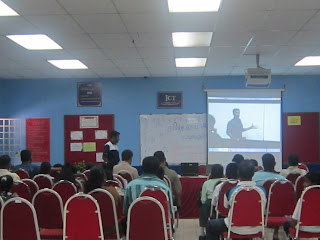Sri Ramanujan
(22 December 1887 – 26 April 1920) was a Indian mathematician and autodidact who, with almost no formal training in pure mathematics, made extraordinary contributions to mathematical analysis, number theory, infinite series and continued fractions. Ramanujan's talent was said by the English mathematician G.H. Hardy to be in the same league as legendary mathematicians such as Gauss, Euler, Cauchy, Newton and Archimedes and he is widely regarded as one of the towering geniuses in mathematics.[1]
Born in Kumbakonam, Tamil Nadu, India, to a poor Brahmin family, Ramanujan first encountered formal mathematics at age 10. He demonstrated a natural ability, and was given books on advanced trigonometry written by S. L. Loney.[2] He mastered them by age 12, and even discovered theorems of his own, including independently re-discovering Euler's Identity. He demonstrated unusual mathematical skills at school, winning accolades and awards. By 17, Ramanujan conducted his own mathematical research on Bernoulli numbers and the Euler–Mascheroni constant. He received a scholarship to study at Government College in Kumbakonam, but lost it when he failed his non-mathematical coursework. He joined another college to pursue independent mathematical research, working as a clerk in the Accountant-General's office at the Madras Port Trust Office to support himself.[3] In 1912–1913, he sent samples of his theorems to three academics at the University of Cambridge. Only Hardy recognized the brilliance of his work, subsequently inviting Ramanujan to visit and work with him at Cambridge. He became a Fellow of the Royal Society and a Fellow of Trinity College, Cambridge, dying of illness, malnutrition and possibly liver infection in 1920 at the age of 32.
During his short lifetime, Ramanujan independently compiled nearly 3900 results (mostly identities and equations).[4] Although a small number of these results were actually false and publish work in all areas of mathematics influenced by his work.






















































